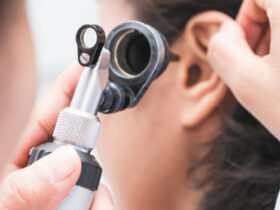 Driving along the beach, nearby parks or in many communities, you’ll notice that people of all ages are living active lifestyles. Here in Florida, we have gorgeous weather throughout the entire year, which allows for more activities like jogging, tennis, pickleball, kayaking, pushing grandchildren on the swing, and the list goes on and on; but with all of this healthy activity, many individuals are more prone to injury and wear and tear.
Driving along the beach, nearby parks or in many communities, you’ll notice that people of all ages are living active lifestyles. Here in Florida, we have gorgeous weather throughout the entire year, which allows for more activities like jogging, tennis, pickleball, kayaking, pushing grandchildren on the swing, and the list goes on and on; but with all of this healthy activity, many individuals are more prone to injury and wear and tear.
One of the most common injury sites is the shoulder. The shoulder is a combination of bones, joints, ligaments, tendons, and muscles that provide an extensive range of motion in common everyday tasks, as well as in advanced athletic performance. Whether you’re using a walker, picking up a heavy grocery bag, or driving the ball 200 yards, an optimal range of motion is key to healthy living. However, many times shoulder pain is due to advanced arthritis or degenerative joint disease. If you have tried pain medications, alternative methods, physical therapy and are still experiencing difficulty with range-of-motion or impingements and discomfort; it may be time to speak to your orthopedic surgeon about shoulder replacement surgery, also known as shoulder arthroplasty.
Most tears of the rotator cuff occur slowly over time as the tissue wears out, and they commonly occur in those 50 years and older. Any force strong enough to tear tendons also damages and weakens the surrounding ligaments. Shoulder pain is multifactorial, and rotator cuff results in instability, frozen shoulder, and severe discomfort. Many rotator cuff tears can be treated nonoperatively. However, painful tears and tears that interfere with shoulder function should be treated with surgical repair.
An MRI, and an evaluation of the overall shoulder stability, which is essential if the individual wants to return to their normal activities, is determined, and the best option for that specific patient is planned out, including rehab and physical therapy.
For full tears of the rotator cuff, surgery is almost always necessary, but if the person can use their arm with some mobility, the tear may be partial. In that case, arthroscopic repair may suffice.
How is arthroscopic surgery performed?
Your surgeon begins the procedure by inserting the arthroscope through a small incision made near the treatment area. A sterile liquid is used to help open up the area, making it easier to see the joint.
Your surgeon then uses specialized miniature instruments to cut, shave, and apply stitches to the affected area. Additional incisions may be required to insert the surgical instruments. Once the joint has been treated, the incisions are bandaged, and you’re off to recovery.
Recovery
After surgery, the initial recovery time usually takes about six weeks, but full recovery can take a few months up to a year. Many patients report feeling no pain, and also having an increased range-of-motion very soon after surgery. Your surgeon will also provide you with an exercise and stretching program, along with physical therapy for an allotted period of time.
Although arthroscopic surgery can be used to treat any joint in the body, it’s most commonly performed on joints in the knee, shoulder, elbow, ankle, hip, and wrist. If arthritis develops in a shoulder joint, and after conservative treatment options such as physical therapy, oral medications and injections fail, shoulder replacement is a successful option.
Shoulder Replacement Surgery
During a traditional shoulder replacement procedure, the surgeon will remove part of the top of the humerus bone, which is located in the joint of the shoulder. The Surgery consists of reshaping the shoulder joint and placing a metal stem (a few inches long) into the shaft of the humerus bone. A metal or plastic plate is then attached to the glenoid socket. These two connected devices will then take the place of the “ball and socket” in the upper shoulder area. Over time, the new joint replacement will allow the shoulder to move more freely, and it will substantially alleviate the pain that the individual was accustomed to on a daily basis. This surgery is ideal for patients with compressed rotator cuff function.
To schedule your appointment, please call Orthopedic Associates of Southwest Florida at 239-768-2272, visit our website at www.ifixbones.com, or ask your physician for a referral.








